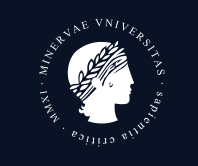 I have been pondering the question in the title for some time. When I came to gather my thoughts for this post, my working title was “Will the internet affect campus-based higher education?”, but since I am convinced that it will, and that it will do so much sooner rather than later, the title quickly gathered the opening “How ..” and the verb changed from “affect” to “subvert”. My thoughts were crystallised somewhat by the following article, to which the inestimable Ninth Level Ireland drew my attention:
I have been pondering the question in the title for some time. When I came to gather my thoughts for this post, my working title was “Will the internet affect campus-based higher education?”, but since I am convinced that it will, and that it will do so much sooner rather than later, the title quickly gathered the opening “How ..” and the verb changed from “affect” to “subvert”. My thoughts were crystallised somewhat by the following article, to which the inestimable Ninth Level Ireland drew my attention:
The Siege of Academe
For years, Silicon Valley has failed to breach the walls of higher education with disruptive technology. But the tide of battle is changing. A report from the front lines.
By Kevin Carey
… Back in the 1990s … many people confidently predicted that the Internet would render brick-and-mortar universities obsolete. It hasn’t happened yet, in part because colleges are a lot more complicated than retail bookstores. … But the defenders of the ivy-covered walls have never been more nervous about the Internet threat. In June, a panicked board of directors at the University of Virginia fired (and, after widespread outcry, rehired) their president, in part because they worried she was too slow to move Thomas Jefferson’s university into the digital world.
The ongoing carnage in the newspaper industry provides an object lesson of what can happen when a long-established, information-focused industry’s business model is challenged by low-price competitors online. The disruptive power of information technology may be our best hope for curing the chronic college cost disease that is driving a growing number of students into ruinous debt or out of higher education altogether. It may also be an existential threat to institutions that have long played a crucial role in American life. …
[When venture capitalists look at higher education] … they see businesses that are organized around communication between people and the exchange of information, two things that are increasingly happening over the Internet. Right now, nearly all of that communication and exchange happens on physical platforms—schools and colleges—that were built a long time ago. … How likely are they to stay that way, in the long term? … As always, the timing would be difficult, and there is as much risk in being too early as too late.
It is a long and interesting article, looking at Silicon Valley startups – their apps, business models, and platforms. Many of these assume something like the current college experience and want to see how technology can improve it – college students with mobile devices are a key demographic for apps, platforms and websites; and, anyway, everyone recalls that Facebook started out that way. But many seek to work out how technology might replace either important aspects of the current college experience (textbooks, lectures) or the entire experience itself. The lessons of the newspaper industry are that, even though those who seek to meet the challenge of technology won’t necessarily get it right, those who ignore this challenge will inevitably founder. The best strategy for established colleges and universities, therefore, is to embrace the challenges posed by technology, and to find the right blend of the real and the virtual.
First movers often have advantages in new markets. In the current state of the internet, this advantage is often magnified because a successful online platform doesn’t have to be rolled out in expensive real-world locations. As Carey points out, you only have to build one EBay, one Amazon, one Craigslist, one Netflix, one iTunes, and of course one Facebook – if you get it right, if you build it, they will come. It may be that you only have to build one successful online higher education platform to change the nature of the offline higher education game.
One candidate strategy is for established distance learning programmes (such as the Open University, the University of Phoenix, and Ireland’s Hibernia College) to take advantage of telecommunications technology to deepen their connections with their students. It is an attractive model, pulling other providers into the market: Pearson announced last month that it is to launch a higher education college, and it is likely that online delivery will feature heavily as the college develops.
Another candidate strategy is to go straight for an online platform. Carey discusses the Minerva Project (logo at top left). It describes itself as “first new elite American university in over a century”, and it sees its mission in global terms, seeking to “accelerate the life trajectory of the most brilliant, hardest-working students in the world to positively shape our collective future”. The point is clear, even if the expression is a little clunky. For his article, Carey met and interviewed
… Ben Nelson, founder and president of the richly funded but still entirely theoretical Minerva Project. … Minerva made news in the valley the week before by getting $25 million in start-up funding from Benchmark Capital, the single biggest seed investment the firm, whose past investments include eBay, Twitter, and Instagram, had ever made. …
Minerva sprang from Nelson’s observation that higher education was increasingly a realm of mismatched supply and demand. … There are a lot more people with the desire and ability to pay for higher education than there used to be. … Minerva is designed to soak up this growing excess demand. Nelson plans to signal elite status through a combination of rigorous admissions standards and a nail-tough academic curriculum. While the courses will be conducted primarily online, students will live together in shared housing units in cities around the world. They’ll start in their home country and then rotate to different cities in later years, finishing with a capstone project in their chosen major. Nelson figures this can be done for less than half of what Ivies charge students, and that if Minerva ends up with a student body of 10,000 undergraduates it will be a financial success.
Or the future might look like Udemy. It is a simple but powerful platform. It provides easy-to-use tools for anyone to design a course, and for anyone else to take it. Unlike the centralised Minerva, which really does look like a virtual university, Udemy looks more like a social networking site: it is a far more democratic, intermediate, and distributed platform, where users generate and access the content, and drive the development of the site.
As always with start-ups, there is a mixture of the interesting and the odd in both Minerva and Udemy, but it is the oddity that sometimes catches the imagination and ensures the success of the product. Identifying the right oddity is the key. For every EBay, Amazon, Craigslist, Netflix, iTunes, and Facebook, there are countless others that did not get beyond their creators’ MacBooks (full disclosure: I’m writing this on a Mac). Minerva might have the balance right, but it’s still got a lot of questions to answer, and a long way to go if it is ever to be added to the pantheon of hyper-succesful internet start-ups. In The Sun Also Rises, Hemingway wrote that the rich go bankrupt in two ways: gradually, and then suddenly. Internet hyper-success is like that. There’s a lot of gradual work, then something happens, and suddenly there’s an EBay, or an Amazon, or a Facebook. By the time that happens, it’s much too late for the others. That’s what’s happening with newspapers: the dead-trees model is gradually and inexorably being subverted by the flow of electrons, something will happen to identify the most appropriate online model, and then suddenly there will be a brave new world of online news.
This is what’s likely to happen with higher education as well. We are probably well after the start of the gradual phase, and Minerva or Udemy might be the Facebook that precipitates or marks the sudden paradigm shift. But even if they aren’t, something will be. If traditional higher education isn’t involved in this process, it risks following the fate of the newspaper industry. It is unsurprising, therefore, that many universities are looking at ways to engage with or exploit technology. For example, university lectures are now increasingly being podcast on iTunesU, and campus-based universities are following the lead of distance-learning universities into greater technological engagement with their students. But these are examples of colleges simply taking the technology on offer. Far more significant are developments in which universities make the technology, as Stanford’s increasing online experience gives rise to Udacity and Coursera (in a partnership with Princeton, Michigan, and Penn), MIT’s similar online experience generates MITx, and Harvard, MIT (again) and Berkeley combine to provide edX. Other universities are hitching themselves to one or other of these wagons, and the pace is picking up internationally. Last month, the University of Edinburgh announced that it was joining the Coursera initiative. Just as traditional campus and distance learning can be either enhanced or subverted by these massively open online courses, so Minerva, or Udemy, or something similar, may in turn subvert even these university-centred initiatives. Moreover, the chances of something-like-Minerva-or-Udemy happening all at once are increasing all the time – Carey notes:
As access to the Internet grows and the cost of everything technological moves toward zero, the amount of money needed to start a company that can grow to scale and just possibly change the world … drops along the same kind of exponential scale. When does that cost become functionally indistinguishable from nothing?
He concludes that, in the relatively near future, online learning environments will be good enough, access to broadband will be wide enough, and the range of platforms and courses on offer will be deep enough, that online higher education “will reach a point of sophistication and credibility where the degrees – or whatever new word is invented to mean ‘evidence of your skills and knowledge’ – it grants are taken seriously by employers”. By that stage, the game will have changed. And if the traditional campus and distance universities are not playing in that new game, then they risk going the way of print media.
All is not lost, of course. Video did not kill the radio star, television did not kill the radio, and the internet will not kill newspapers. But music videos did change the nature of popular music, radio had to adapt to a world with television, and newspapers are in the process of adapting to a world with the internet. So also with higher education: traditional (both campus-based and distance-learning) universities, like newspapers, will have to adapt to a world with the internet. Unsurprisingly, US universities are to the fore in this. The sooner we on campuses in the rest of the world start doing so too, the better.

On my posterous site, I consider another take on whether MOOCs will mean the death of universities – Stephen King of Monash University doesn’t think that it’s likely any time soon. But, in my view, that’s no reason for complacency.